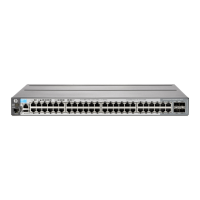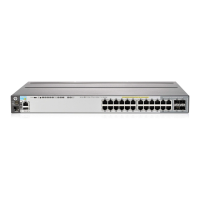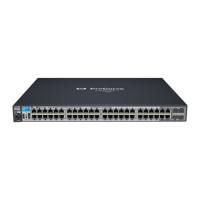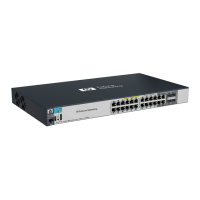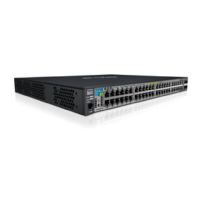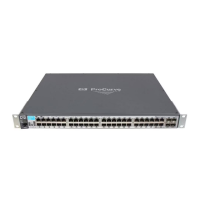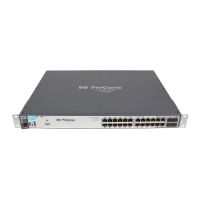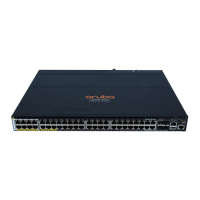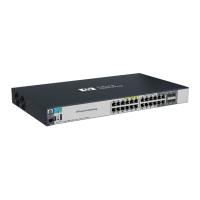Configuring static multicast groups
Use this command to configure a group on the switch so that multicast traffic for that group can
be forwarded with a receiver host. Traffic will be flooded for this group.
Syntax:
[no] ip igmp static-group <group-address>
NOTE: This command must be issued in a VLAN context.
Creates the IGMP static group with the specified <group address> on the selected
VLAN. The no form of the command deletes the static group on the selected VLAN.
How IGMP operates
IGMP is an internal protocol of the IP suite. IP manages multicast traffic by using switches, multicast
routers, and hosts that support IGMP. A multicastrouter is not necessary as long as a switch is
configured to support IGMP with the querier feature enabled. A set of hosts, routers, and/or
switches that send or receive multicast data streams to or from the same sources is called a multicast
group, and all devices in the group use the same multicast group address. The multicast group
running version 2 of IGMP uses three fundamental types of messages to communicate:
A message sent from the querier (multicast router or switch) asking for a response from each
host belonging to the multicast group. If a multicast router supporting IGMP is not present, the
Query
switch must assume this function to elicit group membership information from the hosts on the
network. If you need to disable the querier feature, do so through the CLI using the IGMP
configuration MIB, see “Configuring the querier function” (page 13).
A message sent by a host to the querier to indicate that the host wants to be or is a member of
a given group indicated in the report message.
Report (Join)
A message sent by a host to the querier to indicate that the host has ceased to be a member of
a specific multicast group.
Leave group
NOTE:
IGMP version 3 support: When an IGMPv3 Join is received by the switch, it accepts the host request
and begins to forward the IGMP traffic. This means that ports that have not joined the group and
are not connected to routers or the IGMP Querier will not receive the group's multicast traffic.
The switch does not support the IGMPv3 "Exclude Source" or "Include Source" options in the Join
Reports. Rather, the group is simply joined from all sources.
The switch does not support becoming a version 3 Querier. It becomes a version 2 Querier in the
absence of any other Querier on the network.
An IP multicast packet includes the multicast group (address) to which the packet belongs. When
an IGMP client connected to a switch port needs to receive multicast traffic from a specific group,
it joins the group by sending an IGMP report (join request) to the network. (The multicast group
specified in the join request is determined by the requesting application running on the IGMP
client.) When a networking device with IGMP enabled receives the join request for a specific
group, it forwards any IP multicast traffic it receives for that group through the port on which the
join request was received. When the client is ready to leave the multicast group, it sends a Leave
Group message to the network and ceases to be a group member. When the leave request is
detected, the appropriate IGMP device ceases transmitting traffic for the designated multicast group
through the port on which the leave request was received (as long as there are no other current
members of that group on the affected port.)
Thus, IGMP identifies members of a multicast group (within a subnet) and allows IGMP-configured
hosts (and routers) to join or leave multicast groups.
14 Multimedia Traffic Control with IP Multicast (IGMP)
